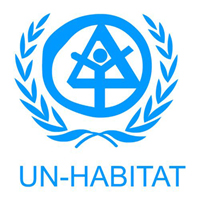Revealed: The Hamas-backed plan for Gaza`s future
The 200-page document, seen by Sky News, comes as hundreds of thousands of displaced Palestinians are set to return to northern Gaza, despite there being limited infrastructure available to support them.
Gaza`s Hamas-run municipal governments have published their first official reconstruction plan for the Gaza Strip, in the latest sign that the group intends to be a leading actor in the rebuilding of the territory.
In recent days, Hamas has re-emerged as the area`s main governing authority, deploying security forces across the Gaza Strip, despite suffering severe military losses during its 15-month war with Israel.
The 200-page document, titled "Gaza Phoenix" and shared with Sky News by an official in Gaza City`s Hamas-led local government, is the first comprehensive reconstruction plan to be published since the war began.
Gaza Phoenix sets out short, medium and long-term priorities for reconstruction and development in the territory, starting almost from scratch.
The immediate priorities include formalising displacement camps, repairing hospitals, clearing rubble and restoring law and order.
There are also much more ambitious long-term proposals, including a tourism-focused economy, a green belt and even Dubai-style artificial islands.
One section, on "wartime resilience", suggests constructing "an underground connecter" between all Gaza cities - a proposal likely to anger Israel, which has sought to destroy Hamas`s underground tunnel network.
International donors would be very unlikely to directly fund the activities of Gaza`s Hamas-led municipal governments, a person familiar with reconstruction efforts told Sky News.
But the project could be delivered by aid groups, the source said, which have historically coordinated with Gaza`s local administrations.
Foreign donors, like the Gulf States, see reconstruction as an opportunity to have influence in post-war Gaza. However, they will have reservations over putting billions of dollars into Gaza`s reconstruction without an internationally agreed and comprehensive plan for stability, as well as assurances of some Palestinian autonomy.
Under the terms of the ceasefire deal, hundreds of thousands of Palestinians displaced from northern Gaza will be allowed to return from Sunday morning.
That makes reconstruction of the north particularly urgent, especially given the higher level of destruction there.
`If they come, they will not find a place to live`
Dr Mohammad Salha, the director of North Gaza`s last remaining hospital, has not seen his wife and children since the war began.
He has been living in Al Awda Hospital, attempting to keep it running against all odds.
His family are staying in a tent in the south. Whenever it rains, he says, their tent fills with water.
"I want to bring them here, but I don`t know where to put them," he says. "At least they have a tent. Here, there is nowhere to put a tent."
Gaza`s government estimates that 14 of every 15 homes have been damaged, leaving the territory littered with an estimated 42 million tonnes of debris.
Watch video of the press conference launch of the plan (Arabic and English)
Photo: Displaced Palestinians attempt to return to their homes in northern Gaza. Source: Reuters.














